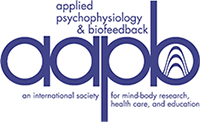Much of the research involving the quantitative EEG (QEEG), in terms of scientific research and clinical interventions, has focused on the four frequency ranges (Delta, Theta, Alpha, Beta) and their respective amplitudes (microvolt levels). The Beta frequency has typically been separated into segments defined by frequency. These measures can be conceptualized as involving different measures of the brain's arousal level. The other conceptual measure is focused on the communication patterns within the brain and involves coherence and phase measures. These communication measures have revealed scientific and clinically relevant information regarding the brain's functioning. This paper examines the communication problems and patterns in the brain in different clinical conditions: autism, Asperger syndrome, schizophrenia, bipolar disorder, Alzheimer's disease/dementia, depression, traumatic brain injury, and cognitive performance. The consistent pattern across all of these conditions is that a decrease in the communication values is related to an increased probability of the presence of the diagnosis.

Beta2 z-score results for case study one at baseline and after one year.

Beta2 coherence values during reading.

Coherence Alpha values to frontal locations during listening.

Kirtley E: Thornton
Contributor Notes
